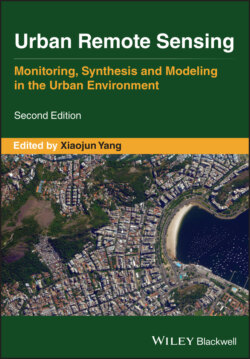Читать книгу Urban Remote Sensing - Группа авторов - Страница 56
3.3.2 FLIGHT OPERATIONS (IN‐FLIGHT)
ОглавлениеThe process of in‐flight operations is much simpler than preflight mission planning. Since much of remote sensor data collection with a UAS is performed using an autonomous or assisted flight mode, there tends to be more user input required during the preflight stage as opposed to the actual in‐flight stage. Once an operator has assessed all relevant factors during the mission planning stage and created a flight plan for a specific project, the rest of the actual data collection process is quite simple. Assuming the operator is utilizing an autonomous flight plan design for mapping purposes, there are no direct inputs required from the operator after the launch, and the operator should focus on maintaining line‐of‐sight and ensuring safety. If the flight plan requires the UAS to change batteries due to the area being mapped becomes too large to cover with one battery, the operator might have to pause the flight to perform a battery swap and then resume. Battery limitations are frequently cited as a significant logistical challenge to utilizing UAS for remote sensing purposes, especially when performing autonomous mapping missions (Dong et al., 2018; Boukoberine et al., 2019; Mazur and Domanski, 2019). After the UAS finishes the flight plan and lands, the operator should download and organize the data. It is generally recommended to check the data while still on‐site in case that any of the images collected are of poor quality and need to be recollected.
An exception to the simplicity of this stage of data collection is when high accuracy ground control validation is required for a project. For many projects, especially those where locational data are not needed, image georeferencing is not required. However, many UAS utilize Global Navigation Satellite System (GNSS) receivers providing positional information in real‐time to the operator. The inclusion of GNSS receivers in UAS also enables the imagery collected by the onboard sensors to be georeferenced. This process of image georeferencing requires the GNSS receiver to measure the coordinates of the UAS at the exact moment an image was collected. Due to the high speed of the UAS and image collection process, it is often difficult for the GNSS receiver to perfectly synchronize with the camera. According to Sanz‐Ablanedo et al. (2018), the method of georeferencing images with the onboard GNSS receiver can only achieve accuracies in the decimeter to meter range. These accuracies can be improved, however, with the inclusion of independent ground control points (GCPs) in the 3D dataset. For instance, Turner et al. (2012) demonstrated that when utilizing only the UAS’s onboard GNSS for georeferencing, the mean absolute total error of their two study locations was 1.247 and 0.665 m, respectively. But when independent GCPs were included in the same image datasets, the location error dropped to 0.129 and 0.103 m, respectively. This suggests that including independent GCPs can significantly improve locational accuracies in 2D and 3D datasets (Cryderman et al., 2014; Agüera‐Vega et al., 2017; Liu et al., 2018). There has also been more research conducted in recent years on the effectiveness of the integration of real‐time kinematic (RTK) and post‐processing kinematic (PPK) technology with GNSS receivers onboard UAS, and some researchers demonstrated the possibility of obtaining sub‐decimeter spatial accuracies without using independent GCPs (Forlani et al., 2018; Gabrlik et al., 2018; Zhang et al., 2019). The decision of whether independent GCPs (or a high‐quality onboard GNSS receiver) should be included in a remote sensing project depends on the accuracy required for the project. Not all projects require sub‐decimeter accuracies, so it might be more feasible (and cost‐effective) for individuals to utilize UAS with only standard quality GNSS receivers that provide lower positional accuracies.
